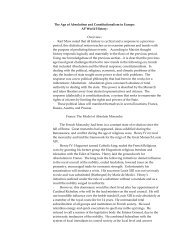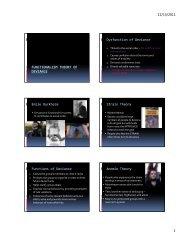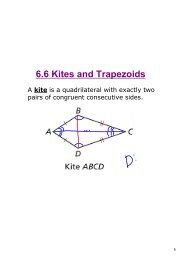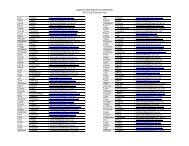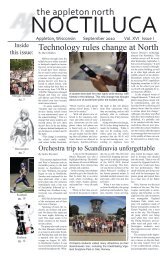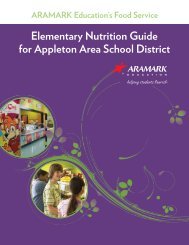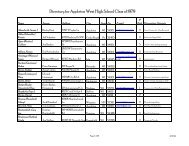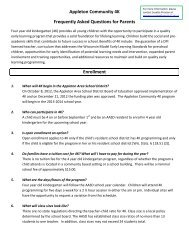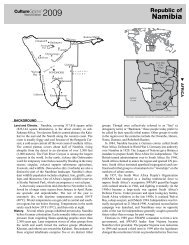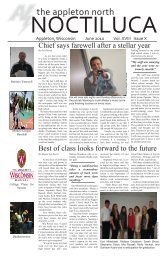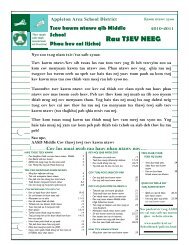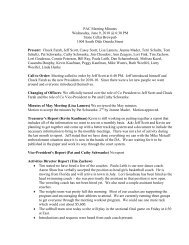Appleton Area School District – Curriculum at a Glance
Appleton Area School District – Curriculum at a Glance
Appleton Area School District – Curriculum at a Glance
You also want an ePaper? Increase the reach of your titles
YUMPU automatically turns print PDFs into web optimized ePapers that Google loves.
Communic<strong>at</strong>ion<br />
Arts<br />
Reading<br />
Writing<br />
Speaking<br />
Listening<br />
M<strong>at</strong>hem<strong>at</strong>ics<br />
Science<br />
Social Studies<br />
<strong>Appleton</strong> <strong>Area</strong> <strong>School</strong> <strong>District</strong> <strong>–</strong> <strong>Curriculum</strong> <strong>at</strong> a <strong>Glance</strong><br />
Kindergarten First Grade Second Grade Third Grade Fourth Grade Fifth Grade Sixth Grade Seventh Grade Eighth Grade<br />
Letter/sound connection.<br />
Phonics. Story structure.<br />
Nursery rhymes, countting<br />
books, fairy tales,<br />
poetry, p<strong>at</strong>tern books,<br />
author studies. Upper<br />
and lowercase letters.<br />
Writing about experiences,<br />
stories, people, and<br />
objects. Speaking in<br />
complete sentences using<br />
logical order. Group<br />
discussions.<br />
Numbers and quantities<br />
to 30. Simple addition<br />
and subtraction. Common<br />
geometric objects.<br />
Measurement (length,<br />
weight, liquid capacity,<br />
time, money, temper<strong>at</strong>ure).<br />
Sorting and<br />
classific<strong>at</strong>ion. P<strong>at</strong>terns.<br />
D<strong>at</strong>a and record keeping.<br />
Classify objects. Observe<br />
the growth cycle of<br />
plants and animals. Use<br />
the scientific process to<br />
make observ<strong>at</strong>ions, ask<br />
questions, and make<br />
predictions.<br />
Personal care. Safety.<br />
Behavior. Rules.<br />
Responsibilities. Family<br />
structure. Basic needs<br />
and economic choices.<br />
Basic geographic loc<strong>at</strong>ions.<br />
Community<br />
helpers. Famous Americans.<br />
P<strong>at</strong>riotic holidays<br />
and symbols.<br />
Beginning/middle/end<br />
blending sounds.<br />
Phonics, meaning, and<br />
language cues to selfcorrect.<br />
Fantasy and<br />
animal stories, fairy tales,<br />
p<strong>at</strong>tern books, poetry.<br />
Organiz<strong>at</strong>ion of ideas for<br />
writing a clear message.<br />
Beginning/middle/end of<br />
story. Capitaliz<strong>at</strong>ion and<br />
punctu<strong>at</strong>ion. Cre<strong>at</strong>ive<br />
dram<strong>at</strong>ics.<br />
Numbers and quantities<br />
to 100. Addition and<br />
subtraction to 100. 2-<br />
and 3-dimensional<br />
objects. Non-standard<br />
units (length, weight,<br />
volume.) Time (nearest<br />
½ hour). Money<br />
(names/values of coins,<br />
combin<strong>at</strong>ions).<br />
Symbols (+, -, =).<br />
Problem- solving<br />
str<strong>at</strong>egies. Graphs and<br />
charts.<br />
New plants. Pebbles,<br />
sand, and silt. Balance<br />
and motion. Collecting,<br />
organizing, and<br />
interpreting d<strong>at</strong>a.<br />
Scientific process.<br />
Wants and needs of a<br />
family. Family<br />
responsibilities and<br />
occup<strong>at</strong>ions. <strong>School</strong><br />
helpers and their roles.<br />
Homes, occup<strong>at</strong>ions and<br />
businesses in neighborhoods.<br />
Famous Americans.<br />
U.S. symbols,<br />
historic places, and<br />
observance days.<br />
Phonics. Prefixes and<br />
suffixes. Reading com-<br />
prehension str<strong>at</strong>egies.<br />
Realistic and humorous<br />
fiction, legends, biography/autobiography.<br />
Prewriting and planning<br />
str<strong>at</strong>egies for writing.<br />
Correct story structure.<br />
Correct spelling of frequently<br />
used words.<br />
Editing. Writing of<br />
letters, stories, and<br />
reports. Oral present<strong>at</strong>ions.<br />
Numbers and place<br />
values to 1000. Addition<br />
and subtraction of 2- and<br />
3-digit numbers. Geometric<br />
shapes. P<strong>at</strong>terns.<br />
Standard units of<br />
measurement. Order and<br />
grouping. Number<br />
comparisons. Equ<strong>at</strong>ions.<br />
Problem-solving str<strong>at</strong>egies.<br />
Money (coin<br />
combin<strong>at</strong>ion values).<br />
Time (to 5 minutes).<br />
Interpret<strong>at</strong>ion of<br />
numerical d<strong>at</strong>a, tables,<br />
graphs. Simple<br />
probability.<br />
Insects. Air and we<strong>at</strong>her<br />
Solids and liquids.<br />
Collecting, organizing,<br />
and interpreting d<strong>at</strong>a.<br />
Scientific process.<br />
History of the <strong>Appleton</strong><br />
area: transport<strong>at</strong>ion,<br />
communic<strong>at</strong>ion, n<strong>at</strong>ural<br />
resources, occup<strong>at</strong>ions/<br />
industry, government,<br />
and diverse ethnic<br />
heritage. Map and globe<br />
skills. Critical analysis<br />
and judgments.<br />
Prefixes and suffixes.<br />
Reading comprehension<br />
str<strong>at</strong>egies for expository<br />
text. Realistic fiction,<br />
mysteries, fables, folk<br />
tales, poetry forms.<br />
Writing process:<br />
prewriting, revision, and<br />
editing. Dialogue.<br />
Written reports, stories,<br />
and folk tales. Persuasive<br />
writing. Oral presenta-<br />
tions.<br />
Numbers and place<br />
values through hundred<br />
thousands. +, -, x and ÷<br />
of whole numbers. Simple<br />
fractions and decimals.<br />
Measurement to<br />
specific degrees of<br />
accuracy. Money<br />
(making change).<br />
Rel<strong>at</strong>ionships between 2<br />
quantities. Symmetry,<br />
congruence, and<br />
similarity of polygons.<br />
Problem-solving<br />
str<strong>at</strong>egies. D<strong>at</strong>a collection.<br />
Simple probability<br />
predictions.<br />
Structures of life. Earth<br />
m<strong>at</strong>erials. Simple<br />
machines. Measurement.<br />
Collecting, organizing,<br />
and interpreting d<strong>at</strong>a.<br />
Scientific process.<br />
Components of a<br />
community. Historic<br />
Community: Plymouth.<br />
Global communities<br />
(sister cities): Chinnendaga<br />
(Nicaragua),<br />
Kanonji (Japan), and/or<br />
Kurgan (Russia). Map<br />
and globe skills. Critical<br />
analysis and judgments.<br />
Book talks and liter<strong>at</strong>ure<br />
circles. Reading com-<br />
prehension str<strong>at</strong>egies.<br />
Tall tales, legends, inform<strong>at</strong>ion<br />
books, historical<br />
fiction, animal fantasy.<br />
Literary techniques and<br />
fluency in writing.<br />
Editing. Written summaries,<br />
inform<strong>at</strong>ional<br />
essays, reports, poetry,<br />
reflections. Basic<br />
keyboarding. Oral present<strong>at</strong>ions.<br />
Numbers and place<br />
values through millions.<br />
+ and <strong>–</strong> of fractions &<br />
decimals. 2- and 3-<br />
dimensional objects.<br />
Multi-digit multiplic<strong>at</strong>ion<br />
& division. Coordin<strong>at</strong>e<br />
system. Metric/U.S.<br />
Customary units (length,<br />
mass, capacity). Number<br />
expressions & sentences.<br />
Problem-solving<br />
str<strong>at</strong>egies. Interpret<strong>at</strong>ion<br />
of numerical and<br />
c<strong>at</strong>egorical d<strong>at</strong>a. P<strong>at</strong>terns,<br />
functions, graphs.<br />
Human body. W<strong>at</strong>er.<br />
Magnetism and<br />
electricity. Ideas and<br />
inventions. Collecting,<br />
organizing, and<br />
interpreting d<strong>at</strong>a.<br />
Scientific process.<br />
Wisconsin and the Midwest<br />
Region: N<strong>at</strong>ive<br />
Americans, explorers and<br />
fur traders, immigr<strong>at</strong>ion<br />
(1800’s to present), st<strong>at</strong>e<br />
government, agriculture/<br />
dairy, lumbering and<br />
paper, manufacturing,<br />
and geography. Critical<br />
thinking.<br />
Interpret<strong>at</strong>ion and evalu<strong>at</strong>ion<br />
of liter<strong>at</strong>ure.<br />
Reading comprehension<br />
str<strong>at</strong>egies. Historical<br />
fiction, autobiographies/<br />
biographies, famous<br />
speeches. Purpose and<br />
audience of written work.<br />
Editing. Essays th<strong>at</strong> persuade,<br />
compare and<br />
contrast. Written reports,<br />
narr<strong>at</strong>ives, poetry, plays.<br />
Gestures, eye contact,<br />
and inflection to<br />
reinforce oral message.<br />
Numbers and place<br />
values through billions.<br />
+, -, x and ÷ of whole<br />
numbers, fractions and<br />
decimals. Properties and<br />
rel<strong>at</strong>ionships between 2-<br />
and 3-dimensional geometric<br />
figures. Ordered<br />
pairs. Perimeter, area,<br />
mass and volume.<br />
Variables in simple<br />
expressions. Problemsolving<br />
str<strong>at</strong>e-gies.<br />
Mean, median, and<br />
mode. Simple st<strong>at</strong>istical<br />
analysis.<br />
Food and nutrition and<br />
effects on the body<br />
systems. Landforms.<br />
Mixtures and solutions.<br />
Variables. Collecting,<br />
organizing, and<br />
interpreting d<strong>at</strong>a.<br />
Scientific process.<br />
United St<strong>at</strong>es history:<br />
Early American before<br />
1775, American Revolution<br />
through 1800,<br />
Westward Expansion,<br />
Civil War, Reconstruction,<br />
and Industrial<br />
Revolution through 1900.<br />
St<strong>at</strong>es and regions.<br />
Critical thinking.<br />
A student’s individual program may vary based on special needs.<br />
Analysis of style and<br />
characteristics of selected<br />
authors. Recurring<br />
literary themes, bias, and<br />
persuasive techniques.<br />
Science fiction, essays,<br />
editorials, mythology.<br />
Varied, complex sentence<br />
structure when<br />
writing. Effective usage<br />
of parts of speech.<br />
Editing. Self-analysis of<br />
small group particip<strong>at</strong>ion.<br />
Comparisons among<br />
whole numbers, fractions,<br />
decimals, and<br />
mixed numbers. Lines,<br />
planes, and solids.<br />
Geometric formulas,<br />
constructions,<br />
transform<strong>at</strong>ions.<br />
M<strong>at</strong>hem<strong>at</strong>ical<br />
expressions and equ<strong>at</strong>ions.<br />
Problem-solving<br />
str<strong>at</strong>egies. Functions.<br />
Samples of popul<strong>at</strong>ions.<br />
St<strong>at</strong>istical measurement.<br />
Measurement<br />
(conversions).<br />
Environments. M<strong>at</strong>ter<br />
and energy. We<strong>at</strong>her and<br />
w<strong>at</strong>er. Models and<br />
designs. Collecting,<br />
organizing, and<br />
interpreting d<strong>at</strong>a.<br />
Scientific process.<br />
Canada, Mexico, Central<br />
America, the Caribbean,<br />
and South America:<br />
geography, clim<strong>at</strong>e,<br />
history, cultural changes,<br />
government, economy,<br />
and current events.<br />
Critical thinking.<br />
Self-selected and teacherselected<br />
classic and<br />
contemporary liter<strong>at</strong>ure.<br />
Reading skills: comparison/contrast,<br />
sequence,<br />
charts and graphs.<br />
Thesis question/st<strong>at</strong>e-<br />
ment. Research with<br />
outline and bibliography.<br />
Writing focus: form<strong>at</strong>,<br />
sequence, precise language,<br />
terms of comparison.<br />
Audience feedback<br />
to improve present<strong>at</strong>ions.<br />
Positive and neg<strong>at</strong>ive<br />
numbers. Two-dimensional<br />
coordin<strong>at</strong>e plane<br />
(points, lines, figures).<br />
Geometric constructions.<br />
Surface area and volume<br />
(rectangular prisms and<br />
cylinders). Pythagorean<br />
Theorem. Measurement<br />
(conversions). Order of<br />
oper<strong>at</strong>ions. Linear<br />
equ<strong>at</strong>ions & inequalities.<br />
Problem-solving str<strong>at</strong>egies.<br />
Characteristics and<br />
limit<strong>at</strong>ions of d<strong>at</strong>a samples.<br />
Theoretical and<br />
experimental probability.<br />
Elements, m<strong>at</strong>ter, cells.<br />
Forms of energy, energy<br />
conversions, food chains.<br />
W<strong>at</strong>er cycle, ecosystems,<br />
environmental issues.<br />
Human body.<br />
Europe, Russia and<br />
Northern Eurasia, Southwest<br />
Asia, Africa, East<br />
and Southeast Asia,<br />
South Asia, the Pacific<br />
World and Antarctica:<br />
geography, clim<strong>at</strong>e, history,<br />
cultural changes,<br />
government, economy,<br />
and current events.<br />
Critical thinking.<br />
Analysis of historical<br />
fiction, science fiction,<br />
poetry, essay, drama,<br />
biography/autobiography,<br />
and short story. Reading<br />
skills: evalu<strong>at</strong>ion, chronology,<br />
cause/effect, tables and<br />
timelines. Narr<strong>at</strong>ive and<br />
expository writing, research.<br />
Writing focus: cause/effect,<br />
hypothesizing, connecting,<br />
synthesizing, grammar.<br />
Using notes or outline in<br />
oral present<strong>at</strong>ions.<br />
Irr<strong>at</strong>ional numbers (, ).<br />
Complex 2- and 3-dimensional<br />
figures. Transform<strong>at</strong>ions.<br />
Constructions<br />
(parallel and perpendicular<br />
lines). Converse of<br />
Pythagorean Theorem<br />
Algebraic properties.<br />
Algebraic expressions and<br />
linear equ<strong>at</strong>ions. Problemsolving<br />
str<strong>at</strong>egies. Linear<br />
and nonlinear graphs.<br />
Critical analysis of d<strong>at</strong>a in<br />
graphs, tables, and charts.<br />
Genetics, evolution,<br />
motion and forces,<br />
astronomy, we<strong>at</strong>her.<br />
U.S. history introductory<br />
survey course: concepts,<br />
events, people and the<br />
heritage of the United<br />
St<strong>at</strong>es.
Science<br />
Program Goals<br />
Students in the <strong>Appleton</strong> <strong>Area</strong> <strong>School</strong> <strong>District</strong> will:<br />
Know about science themes and connect and<br />
integr<strong>at</strong>e them into wh<strong>at</strong> they know about<br />
themselves and the world around them.<br />
Realize th<strong>at</strong> scientific knowledge is public,<br />
replicable, and continually undergoing revision and<br />
refinement based on new experiments and d<strong>at</strong>a.<br />
Realize th<strong>at</strong> science includes questioning, forming<br />
hypotheses, collecting and analyzing d<strong>at</strong>a, reaching<br />
conclusions, evalu<strong>at</strong>ing results, and communic<strong>at</strong>ing<br />
procedures and findings to others.<br />
Use science to explain and predict changes th<strong>at</strong><br />
occur around them.<br />
Use science to evalu<strong>at</strong>e consequences in order to<br />
make responsible choices.<br />
Use their knowledge of science concepts and<br />
processes in making informed choices regarding<br />
their lifestyles and the impact they have on their<br />
environment, and enhance their n<strong>at</strong>ural curiosity<br />
about their environment.<br />
Understand th<strong>at</strong> science and technology affect the<br />
Earth’s systems and provide solutions to human<br />
problems.<br />
Use science to analyze topics rel<strong>at</strong>ed to personal<br />
health, environment, and management of resources;<br />
they will help evalu<strong>at</strong>e the merits of altern<strong>at</strong>ive<br />
courses of action.<br />
Social Studies<br />
Program Goals<br />
Students in the <strong>Appleton</strong> <strong>Area</strong> <strong>School</strong> <strong>District</strong> will:<br />
Develop a chronological sense of time, continuity<br />
and change, and awareness of geographic place.<br />
Recognize th<strong>at</strong> history and culture influence a<br />
society.<br />
Discern cause and effect rel<strong>at</strong>ionships.<br />
Understand reasons for conflicting ideas and to<br />
develop possible resolutions.<br />
Develop a wider perspective.<br />
Interpret visually-oriented content.<br />
Recognize the rights and responsibilities of<br />
individuals and of society.<br />
Analyze and evalu<strong>at</strong>e inform<strong>at</strong>ion/d<strong>at</strong>a.<br />
Understand and practice democr<strong>at</strong>ic beliefs.<br />
Develop an awareness of current affairs.<br />
Recognize facts and vocabulary pertinent to the<br />
grade and/or discipline.<br />
For further inform<strong>at</strong>ion, please contact<br />
your child’s teacher or the building principal.<br />
For curricular area questions, please contact:<br />
Communic<strong>at</strong>ion Arts/Social Studies/<br />
World Language<br />
Nan Bunnow, <strong>Curriculum</strong> Director<br />
832-1743<br />
M<strong>at</strong>hem<strong>at</strong>ics/Science/ Health & Human Performance<br />
Becky Walker, <strong>Curriculum</strong> Director<br />
832-5710<br />
Fine Arts<br />
Jim Heiks, <strong>Curriculum</strong> Coordin<strong>at</strong>or<br />
832-6121<br />
Instructional Tech. & Career and Tech. Ed.<br />
Dale Hanson, <strong>Curriculum</strong> Director<br />
832-6145<br />
The <strong>Appleton</strong> <strong>Area</strong> <strong>School</strong> <strong>District</strong> does not discrimin<strong>at</strong>e<br />
against pupils on the basis of sex, race, color, religion,<br />
n<strong>at</strong>ional origin, ancestry, creed, pregnancy, marital or<br />
parental st<strong>at</strong>us, sexual orient<strong>at</strong>ion or physical, mental,<br />
emotional or learning disability or handicap in its<br />
educ<strong>at</strong>ion programs or activities. Federal law prohibits<br />
discrimin<strong>at</strong>ion in employment on the basis of age, race,<br />
color, n<strong>at</strong>ional origin, sex, religion or handicap.<br />
El Distrito Escolar de <strong>Appleton</strong> no discrimina a los alumnos<br />
con motivo de sexo, raza, color, religión, lugar de origen,<br />
ascendencia, credo, gravidez, estado civil o de p<strong>at</strong>ernidad,<br />
orientación sexual, o incapacidad física, mental, emocional, o<br />
de aprendizaje o minusvalía en los programas educacionales o<br />
actividades. La ley federal prohíbe la discriminación en el<br />
empleo por motivo de edad, raza, color, origen nacional, sexo,<br />
religión o minusvalía.<br />
Cov tsev kawm ntawm hauv <strong>Appleton</strong> no txwv tsis pub thuam,<br />
cem, cais, thiab ua tsis ncaj ncees rau ib tug tibneeg twg vim<br />
nws yog pojniam lossis txivneej, nws cev nqaij daim tawv, los<br />
yog xim qaij daim tawv ntawm nwv haiv neeg, nws txoj kev<br />
ntseeg lossis kev dab qhuas, nws haiv neeg, nws caj ces mus<br />
rau poj koob yawm txwv, kev lis kev coj, muaj/tsis muaj<br />
menyum, muaj/tsis muaj pojniam lossis txiv, muaj/tsis muaj tub<br />
ki, kev plees kev yi, lossis puas tes puas taw ntawm cev nqaij<br />
daim tawv, kev nyuaj siab ntxov plawv, kev kawm tsis tau<br />
lossis ib yam dabtsi qeeb/poob qab ntawm kev kawm. Txoj cai<br />
hauv Federal txwv tsis pub thuam, cem, cais thiab ua haujlwm<br />
vim nws lub hnub nyoog, nws haiv neeg, nws cev nqaij daim<br />
tawv, nws caj ces, los yog xim qaij daim tawv ntawm nwv haiv<br />
neeg, yog pojniam lossis txivneej, nws kev ntseeg los yog kev<br />
dab qhuas thiab puas/xaim ib qho dabtsi ntawm cev nqaij daim<br />
tawv lossis hauv hlwb (handicap).<br />
<strong>Curriculum</strong><br />
<strong>at</strong> a <strong>Glance</strong><br />
Kindergarten<br />
through<br />
Grade Eight<br />
Communic<strong>at</strong>ion Arts<br />
M<strong>at</strong>hem<strong>at</strong>ics<br />
Science<br />
Social Studies<br />
Communic<strong>at</strong>ion Arts<br />
Program Goals<br />
Students in the <strong>Appleton</strong> <strong>Area</strong> <strong>School</strong> <strong>District</strong> will:<br />
Develop a positive <strong>at</strong>titude toward the communic<strong>at</strong>ion<br />
experience.<br />
Become independently proficient in reading<br />
str<strong>at</strong>egies.<br />
Understand the role of liter<strong>at</strong>ure in the human<br />
experience and be able to apply this understanding<br />
to their own lives.<br />
Become lifelong readers.<br />
Communic<strong>at</strong>e verbally and nonverbally in a<br />
spontaneous, cre<strong>at</strong>ive, organized, and fluent manner<br />
using an extensive and appropri<strong>at</strong>e vocabulary.<br />
Apply the writing process to produce a variety of<br />
written expressions to accomplish diverse purposes<br />
and under varied circumstances.<br />
Use <strong>at</strong>tentive listening and observ<strong>at</strong>ion as tools for<br />
both academic and social learning.<br />
Give evidence of multiple thinking modes in all<br />
areas of communic<strong>at</strong>ion (e.g. logical, inferential,<br />
cre<strong>at</strong>ive, problem solving).<br />
Loc<strong>at</strong>e and utilize a wide variety of sources for<br />
inform<strong>at</strong>ion and recre<strong>at</strong>ion.<br />
Understand and apply technology in the communi-<br />
c<strong>at</strong>ion process.<br />
M<strong>at</strong>hem<strong>at</strong>ics<br />
Program Goals<br />
Students in the <strong>Appleton</strong> <strong>Area</strong> <strong>School</strong> <strong>District</strong> will:<br />
Become m<strong>at</strong>hem<strong>at</strong>ical problem solvers.<br />
Learn to reason m<strong>at</strong>hem<strong>at</strong>ically.<br />
Learn to communic<strong>at</strong>e m<strong>at</strong>hem<strong>at</strong>ically.<br />
Make m<strong>at</strong>hem<strong>at</strong>ical connections.<br />
Become proficient in basic comput<strong>at</strong>ional skills.<br />
Learn to use technology appropri<strong>at</strong>ely.<br />
A Hmong transl<strong>at</strong>ion of this document<br />
is available <strong>at</strong> your school office.<br />
Daim ntawv no nws kuj muaj muab pes ua lus<br />
hmoob nyob rau ntawm lub hoob kas ntawm<br />
koj lub tsev kawm ntawv.<br />
A Spanish transl<strong>at</strong>ion of this document<br />
is available <strong>at</strong> your school office.<br />
Copias de este documento en Español,<br />
se encuentran en la oficina de su coleglo.<br />
March 2010



